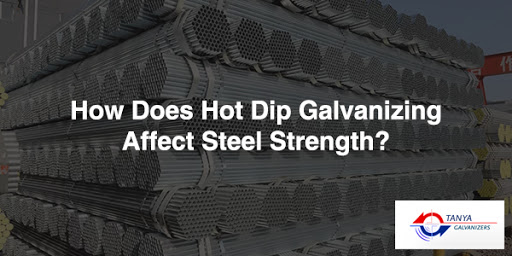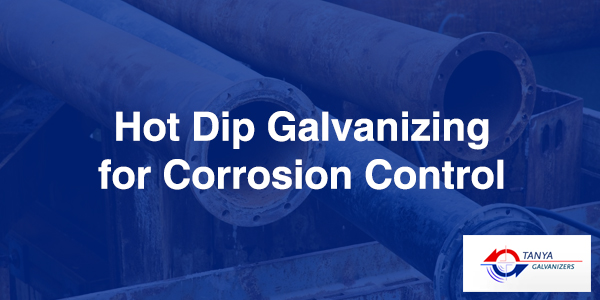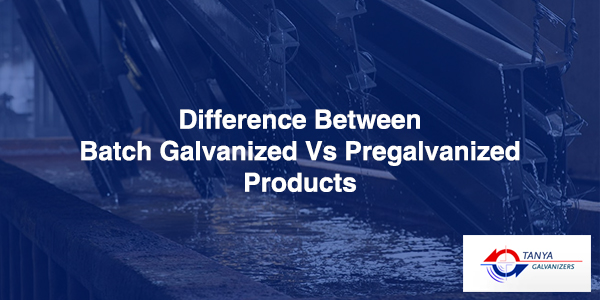Businesses all around the world are shifting towards the use of steel rather than iron for a more durable and long lasting structure. One of the main reasons behind this is the longevity that comes with galvanized steel and quality that galvanized delivery even when it comes in contact with reactive agents. It is because of these long lasting properties of galvanized steel along with its noble property it is used and opted across different industries. If you are into business where requirement of durable metal is a must, then you should look forward to invest in galvanized steel for sustainability and larger flexibility for your business.
Let’s introspect what is galvanized steel and why it is a must for your business.
What is Galvanized Steel?
Galvanized steel is a type of metal that has been developed by coating layer of zinc onto steel. This coating of zinc on to steel is carried out using two galvanizing process hot dip galvanizing and cold galvanizing. In either of cases Galvanized steel is developed with the purpose of protecting against rust and corrosion. It is based on the requirement of business one should select wisely whether to use hot or cold galvanized steel to fulfill their business requirement.
How Galvanized Steel provides Benefits and Flexibility to your Business
Galvanized steel has multiple usages in a business and can be used to replace even other materials that are deemed expensive or damaged. The supplement of galvanized steel not only provides economical resolution but also provide larger flexibility to business because of its properties. Some of the major benefits of using Galvanized steel are reflected below:
- Sustainability
- Durability
- Proven Quality
- Cost Effectiveness
- Honesty
- Reliability
- Complete Coverage
- Predictability
- Triple protection
- Toughness
- Faster Turnaround
These benefits signified by the galvanized steel ensure a quality advantageous position for your business. Let’s introspect how each of these quality ensure sustainability of galvanized steel, making it a must for your business.
Sustainability of Galvanized Steel
The long-term durability provided by galvanizing is achieved at relatively low environmental burden in terms of energy and other globally relevant impacts. One of the main reason behind this being non galvanized steel or other metals has to be maintained from time to time against corrosion and followed up with color to ensure long lasting vendetta. The usage of galvanized steel ensure protection against corrosion resulting in lower maintenance cost ensuring usage of the budget elsewhere, while protecting the environment from harmful fumes of re-coloring over and over again.
Durability of Galvanized Steel
A galvanized coating is one of the most durable forms of corrosion protection on the market. One of the main reasons behind this is galvanized steel ensures removal all kind of impurities from within the steel. Further, with the process of galvanizing, steel results in getting an additional coating of 85mm if the steel used is 6mm thick. This 85mm coating is corrosion proof against majority of rusting and corrosive agent for a long period of time, making the galvanized steel long lasting and durable.
Proven Quality of Galvanized Steel
Galvanizing is all around us, with the galvanizing of steel different industry recording increased production over the years. From the smallest to the largest elements, galvanized steel define itself from time to time as trustworthy and reliable, with a track record and proven performance, which is rigorously tested through expert monitoring and performance data collection defining 0.01m² corrosion rates for every 10km².
Cost Effectiveness of Galvanized Steel
The cost of protecting steel from corrosion takes into consideration two important elements, the initial cost of protection and the lifetime cost. On a comparison scale of coloring to that of galvanizing the cost of galvanizing showcases 35% lower lost based on average of initial cost and life time cost. This results in large scale saving for businesses in long run resulting in a cost effective solution for the business.
Honesty of Galvanized Steel
The metallurgical bond that is framed when steel is plunged into liquid zinc; an aroused covering offers direct, secure assurance consistently. Hot galvanizing sans uncontaminated steel for the rusting cycle to reappear, it is because of this reason failure from underneath with galvanizing steel is almost impossible, making the galvanized steel an ideal material for all season. This surety of protection ensures a consistent honesty of with the usage of galvanized steel.
Reliability of Galvanized Steel
Galvanizing of steel is a relatively controlled process. This makes the coating a consistent, process. It is because of this reason galvanizing steel is most reliable when it comes to corrosion protection. It is mainly because galvanizing is a metallurgical process that creates a metallurgical bonding rather than chemical or mechanical bonding making the zinc and steels a single structure. This ensures a thorough reliability with galvanized steel.
Complete Coverage of Galvanized Steel
Galvanizing creates a metallurgical bond between steel and zinc, forming a coating that will last for generations. This provides superior strength besides superior coverage, so that galvanized steel structures remain protected, even in their most vulnerable areas. This ensures that the structure is protected from inside out even in case of exposure to extreme corrosive condition, providing complete coverage with the usage of galvanized steel on any structure.
Predictability of Galvanized Steel
Galvanized coating on steel showcases a predictable protection against corrosion weather in a linear fashion. The thicknesses of the coating are measurable and offer life spans that can be relied on and forecasted easily. Using this methodology forecasting for coating thickness based on gauge size of the steel and linear predictability calculating possible of corrosion if any is much easier in galvanized steel, making it ideal for usage and predictable for types of usage.
Triple Protection of Galvanized Steel
The usage of galvanized steel ensures triple protection with its usage in the following ways:
- Physical Barrier: A galvanized coating provides a physical barrier which is metallurgically bonded, and prevents the underlying steel from being exposed to atmospheric conditions.
- Sacrificial Protection: A galvanized coating will corrode preferentially and slowly highlighting cathodic protection. It is because scratches on galvanized steel do not require repair work, and in case areas do become exposed to humidity and other corrosive elements, the galvanized coating will corrode preferentially and at a slower rate than the underlying steel.
- Prevention of sideways creep: In the unusual event that a galvanized coating is locally compromised and bare steel is exposed, the zinc coating will limit damage and prevent a form of corrosion known as sideways creep, which in turn will protect the steel by slowing down the overall corrosion process.
This highlights the triple approach to protection with the usage of galvanized steel.
Toughness of Galvanized Steel
Galvanizing has an abrasion resistance up to ten times better than organic paint coatings. The hot dip process is unique, producing a coating which is bonded metallurgical to the steel. As a result, galvanized steel has superior resistance to mechanical damage during handling, storage, transport and erection. This unique metallurgical bonding ensures compact toughness to the galvanizing steel making it in uniquely applicable for all possible requirements.
Faster Turnaround for Galvanized Steel
Galvanizing is not a time-consuming process and in reality, it takes just a few minutes to dip prepared steel work into molten zinc to form a durable, reliable coating. This in turn makes the availability of galvanized steel much faster compared to other metals making it an ideal material for usage since it has a fast turnaround time.
Other than these major benefits that your business can have with the usage of galvanized steel, it also reflects other major advantages as below:
- Low initial cost
- Longevity
- Sacrificial anode
- Multiple approach to galvanizing process as per requirement
With these additional advantages over the existing benefits highlighted above it is clearly visible how galvanized steel can provide a sustainable solution to a business ensuring it a must requirement in business for greater flexibility and edge over natural agents & calamities and other business competitors.
If you are looking for galvanized steel requirements in your business, then look no more come to us at galvanizer for best in quality galvanized steel.
Why Choose Us?
At Galvanizer our team work relentlessly to come up with innovation’s that can deliver you ultimate experience of galvanized products. Our multi-lateral testing and development process ensures delivering our client premiere quality of galvanizing process. With decades of industry experience we offer nothing but the best. To know more or to order from us get in touch with us.






 There is a general misunderstanding among common people that every zinc coating is called galvanization but this is not true as there might be many processes through which a zing coating can be applied. Hot Dip Galvanizing is a coating which is formed after immersing a steelwork in molten zinc. There are however two different processes of hot-dip galvanizing which are pregalvanizing and batch galvanizing.
There is a general misunderstanding among common people that every zinc coating is called galvanization but this is not true as there might be many processes through which a zing coating can be applied. Hot Dip Galvanizing is a coating which is formed after immersing a steelwork in molten zinc. There are however two different processes of hot-dip galvanizing which are pregalvanizing and batch galvanizing. 


